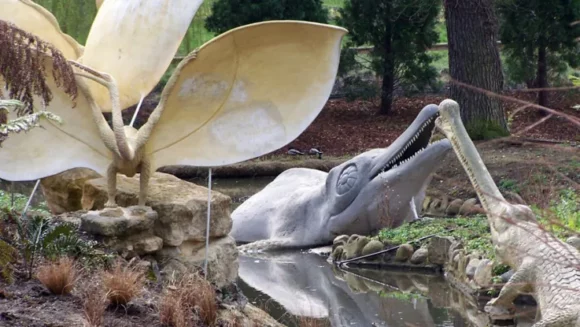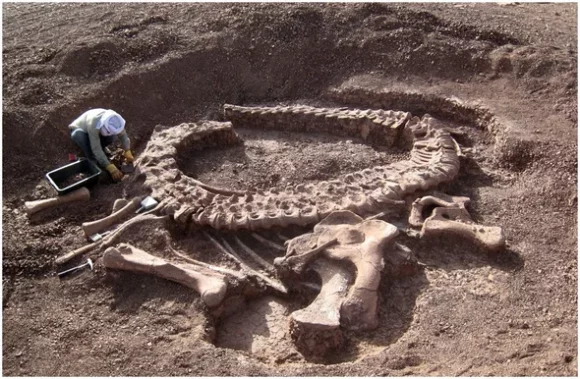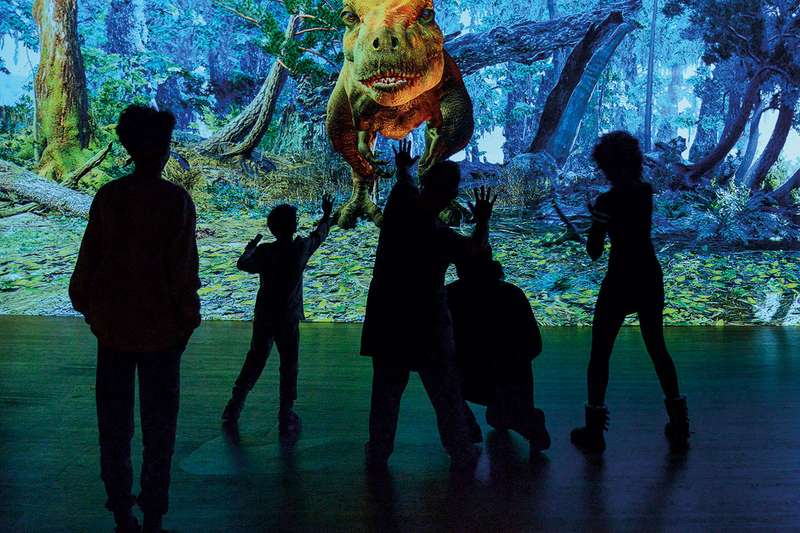The Great Exhibition of 1851 was a huge success — so huge, in 1852 the huge iron and glass structure that had contained it was reassembled on parkland in Penge in South London to form the centrepiece of a complex of gardens, fountains and unusual attractions.
Dispel any notion that Penge was an afterthought: the permanent exhibition cost nine times as much as the Great Exhibition itself. And the Geological Court — arguably its most beguiling attraction — continues to enchant and inspire.
Cleverly landscaped and planted to evoke lost landscapes, peppered with artificial geological features and sculptures of long-extinct creatures, this naturalistic celebration of geology and palaeontology opened to the public in 1854. Whole teams of experts were involved in the enterprise, led by natural history artist Benjamin Waterhouse Hawkins, geologist David Thomas Ansted, and mining engineer James Campbell. Theirs was the world’s first attempt at depicting prehistoric worlds at scale in sculptural form.
Today elephantine sloths, Jurassic marine reptiles and delicate pterosaurs continue to watch other warily from the banks of artificial islands. Delicate, weathered, and in most cases colourless (the British weather is not kind to Victorian cement) they are also oddly modern-looking. The whole concept of a “dinosaur” was hardly over a decade old when the Court opened, and the field was advancing fast. Visitors were startled to discover that dinosaurs weren’t at all the appalling dragons that artists had imagined just a few years before. “It seems a very model of innocence and contentment,” wrote one journalist of the Iguanodon, “a huge antediluvian illustration of the amiability produced by a strictly vegetarian face.”
Paleoartist Mark P Witton and evolutionary biologist Ellinor Michel have assembled a work of scholarship that’s also a rich visual resource, indispensable for historians and prehistorians alike. Given the sheer vulnerability and fragility of the site, a record this rich and detailed — and so frankly charming — is long overdue.



